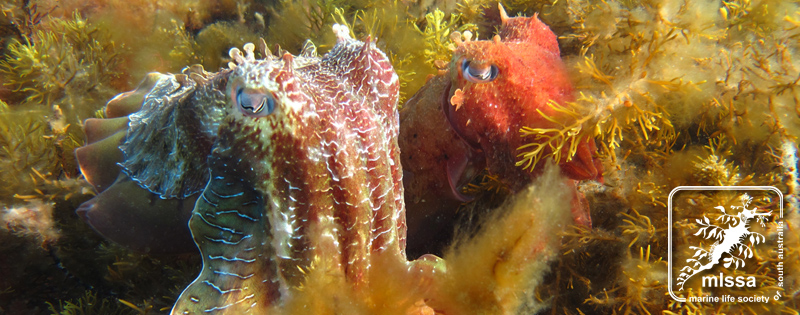The Marine Life Society of South Australia has condemned a recent study into the potential impact of shipping noise on the Giant Australian Cuttlefish aggregation claiming that the study is scientifically flawed and does not prove that shipping has not adversely affected the population. The Society is concerned that the report may be used to justify the approval of the Port Bonython Bulk Commodities Export Facility near Point Lowly this month.
Following the report’s release in April, secretary Dan Monceaux sought scientific opinions from underwater acoustics experts interstate to confirm his own analysis of the study. Advice received suggested that field studies would be the only way to seriously investigate harm or potential harm of this kind. The recent study entitled ‘Investigating potential impacts of shipping on Giant Australian cuttlefish’ was instead conducted entirely in the lab.
“The study’s methodology is flawed as it failed to create any conditions representative of present or future Upper Spencer Gulf shipping scenarios,” says Monceaux. “The scientists recorded much smaller vessels in Port Adelaide instead of Cape class vessels, which can be up to almost 300 metres long, with propellers 6-7 metres in diameter. Cape vessels are always present in Upper Spencer Gulf so why would the scientists record smaller vessels? The recordings were then played back to captive animals and eggs in tanks, using underwater speakers which were unable to reproduce the full frequency range of the recordings.”
“They didn’t even get the duration of exposure right, claiming that the batteries in their audio players wouldn’t allow playback time for longer than 19-21 hours. This is at odds with the device manufacturer’s claims of 28 hours. Ultimately, the cuttlefish and eggs were only exposed to two thirds of the dosage of idling engine sound that they currently experience with a vessel present at the existing Port Bonython jetty. Tug-boat noise during berthing is an additional source of intense acoustic pollution (especially at slow speeds) but no recordings of that were made.”
A regional impact study for the Upper Spencer Gulf Marine Park has predicted an increase of shipping traffic from 360 movements in the park per annum to over 1000 by 2020, not including barge and tugboat activity. The Marine Life Society of SA say that the environmental impacts of shipping activity remain poorly understood, while scientific studies internationally have shown that other cephalopod species are vulnerable to acoustic pollution with potentially debilitating or fatal results.
“Since the study’s conditions are not comparable to what cuttlefish face presently or in the future near their breeding grounds, this report must not be used to justify the approval of the proposed wharf and subsequent increase in shipping traffic. In absence of knowledge, the precautionary principle must apply.”
If constructed, the proposed Port Bonython iron ore export wharf would run directly through prime cuttlefish breeding habitat. The Marine Life Society believes that by considering alternatives including the Alternative Port Working Party’s concept south of Whyalla, mining company Iron Road’s proposed port in Southern Spencer Gulf and use of the rail link with Darwin, mineral exports could proceed while allowing the Point Lowly cuttlefish breeding aggregation time and conditions to recover. The population declined approximately 93 percent from the late 1990s to 2013 for unknown reasons. In 2014 an increase on the previous year’s numbers was recorded- a trend that the Marine Life Society would like to see continue.
The Society believes that the Giant Australian cuttlefish aggregation, the only one of its kind in the world, should be preserved for science, education, recreation and tourism and be suitably protected by the marine park in which it occurs. The Marine Life Society of South Australia remains concerned that this questionable acoustic impact study may soon be used to justify future harm to a struggling natural wonder.


[…] ships at sea south-east of Whyalla, which should provide a wide enough buffer zone… but as I wrote many years ago when the Port Bonython mineral port proposal was a live issue, cuttlefish can be harmed or killed […]